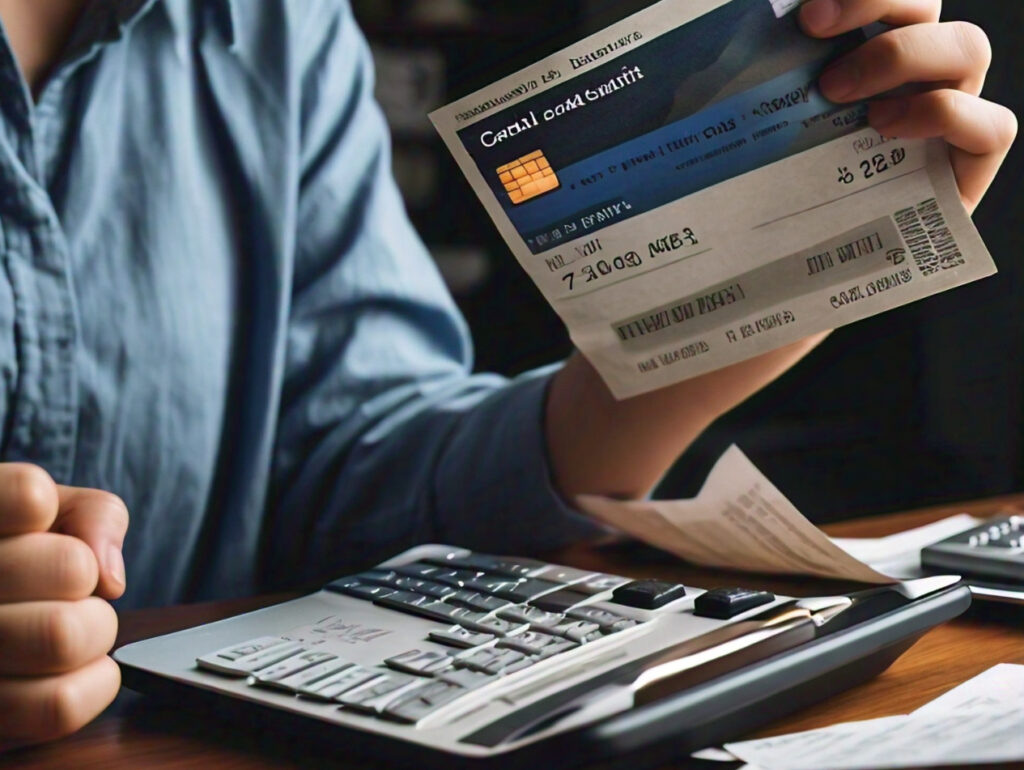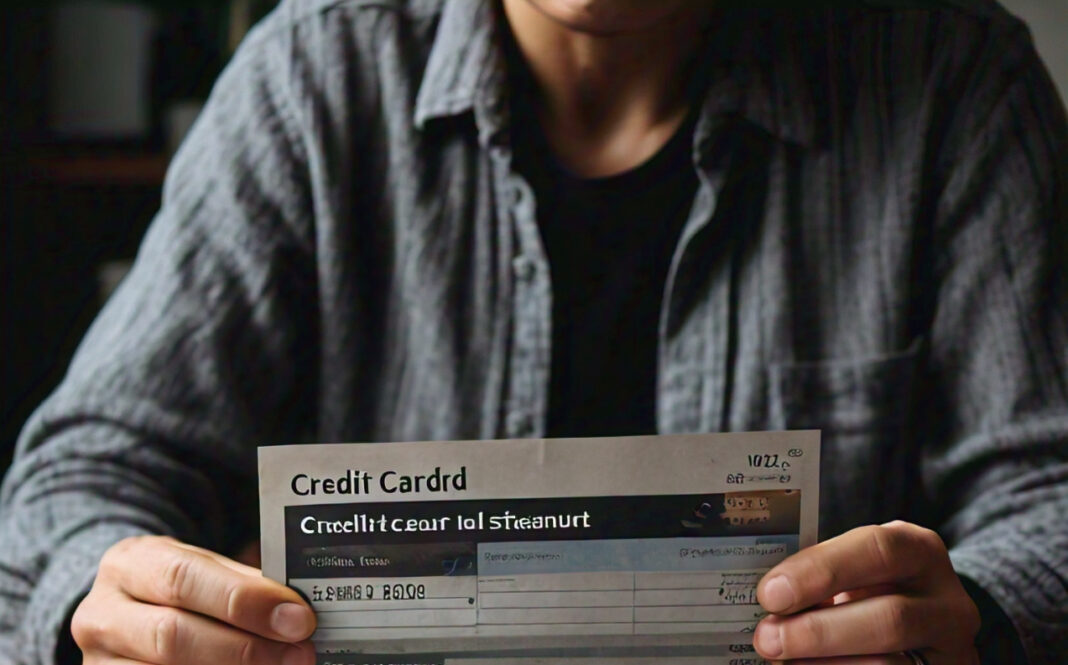Credit cards can be an extremely useful financial tool, affording flexibility in spending and either the rewards or the opportunity to build credit. However, if not watched closely, credit card debt can spiral out of control, leading to financial stress and long-term consequences. Whether you have accumulated a small balance or feel overwhelmed by significant credit card debt, knowing how to manage and eliminate it effectively is crucial for your financial well-being.

In this step-by-step guide, we consider various approaches to dealing with credit card debt. From understanding how it originally built up to actionable steps you can take to pay off your credit card debt, we’ll cover all you need to know to regain control of your finances. We’ll also talk about waysto avoid falling into credit card debt in the future and how credit cards can be used responsibly.
If you’re either just embarking on attempting to pay off credit card debt or looking for new ways to pay off the debt faster, this guide will show you exactly how to get the knowledge and tools needed to be debt-free.
Understanding Credit Card Debt
Before we discuss how to handle credit card debt, it is vital to understand how this kind of debt operates and why it can be so challenging to manage.
How Credit Card Debt Accumulates
Credit card debt typically builds up when you leave a balance month after month and do not pay your bill. Here’s how this usually happens:
- You make purchases on your credit card.
- At the cycle’s end, you get a statement of balance and the minimum amount due.
- In case of non-payment of the entire balance, the remaining amount carries forward to the next month.
- This carried forward amount also attracts interest, thereby increasing the debt amount overall.
Interest Rate and Its Impact
Most credit cards are very costly, lending out at interest rates between 15% and 25% or higher. It means that most of your payments, in case of a carryover, go to service the interest rather than actually reducing the principal.
For example, with an 18% APR on a $5,000 balance and making just the minimum payment-which is generally 2% of the balance-it would take over 30 years to pay off your debt and you will have paid over $12,000 in interest!
The Minimum Payment Trap
Too many people fall into the trap of only making minimum payments on their credit cards. While this keeps the account in good standing, it does very little to reduce the overall debt. Minimum payments are designed to mostly cover the interest charges, with only a small portion going towards the principal balance.
Assessing Your Credit Card Debt
The first step in dealing with credit card debt is getting a clear picture of your current situation. Here’s how to assess your credit card debt:
Gather Your Credit Card Statements
Collect statements for all of your credit cards. Make certain that you have the most up-to-date information about each card.
Create a Debt Inventory
Make a list of your credit card debts by including:
The name of the credit card
- Current balance
- Interest rate (APR)
- Minimum pay required
Calculate Your Total Debt
Add up the card balances to know your total credit card debt. That figure is scaring, but you need to be aware of the entire amount, so that you can make an appropriate payoff plan.

Determine Your Debt-to-Income Ratio
One of the most important key indicators of your financial health is your debt-to-income ratio. In order to calculate it:
Add up all of your monthly debt payments to arrive at an overall figure: credit cards, loans, mortgage payment. Take that amount and divide by your gross monthly income. Times that number by 100, then your result is in percent format.
A DTI of less than 36% is generally considered good, while anything above 43% might make it difficult to borrow money or manage your debts effectively.
Strategies for Paying Off Credit Card Debt
The next thing you should do after having an overview of how much you actually owe is to devise a plan to pay it off. Following are a few methods to do so effectively:
The Debt Avalanche Method
The Debt Avalanche Method: this involves paying off credit cards with the highest interest rates first. Working of this method goes like this:
- Make minimum payments on all your credit cards.
- Apply extra cash to the highest-interest-rate card.
- Once that one is paid off, address the next highest-rate card.
shaving the most interest off over time, it does take longer to appear to make progress if your high-interest cards are also the ones with the largest balances.
### The Debt Snowball Method
The Debt Snowball, popularized by financial expert Dave Ramsey, focuses on paying off your smallest debts first, regardless of interest rates. This process goes like this:
- Pay the minimum on all of your credit cards.
- Take any additional money and put it toward the card with the lowest balance.
- When that card is paid off, take the money you applied to it and redirect it to the card with the next lowest balance.
This may cost a lot more in interest down the line, but the quick wins will be able to help you in sustaining your motivation.
Balance Transfer Credit Cards
Balance transfer credit cards allow you to transfer debt from high-interest credit cards to a new card with a low or 0% introductory APR. It will give you a window-usually 12 to 18 months-during which you’ll be able to pay down your debt without adding more interest.
But then watch out for balance transfer fees, which may run as high as 3-5% of the transferred amount, and make sure you will be able to clear the balance before the introductory period expires.
Debt Consolidation Loans
Debt consolidation involves taking up a new loan used in offsetting various credit card debts. The result is, it reduces your worries over many payments while probably bringing down your interest rate. Personal loans or home equity loans are common options for debt consolidation.
Be very cautious with this approach and make sure that you understand all of the costs and terms of such debt consolidation.
How to Negotiate with Credit Card Companies
If you are in a situation where you cannot pay, don’t hesitate to contact your credit card companies. They may be willing to help so that the amount of debt is something with which you can work.
Request a Reduction in the Rate of Interest
If you have a good payment history, call your credit card company and ask them whether they can lower your interest rate. Even if it’s the tiniest percent decrease, over time it will save you money.
Request Hardship Program
If you are having financial hardship, then ask about their hardship programs. These types of programs may give you reduced interest rates, waiving fees, or reduced minimum payments for certain periodical cycles.
Debt Settlement
It can be the last resort: debt settlement. This simply means negotiation to try and arrive at a lump sum amount, less than what you actually owe the creditor, in order to settle the debt completely. However, it has severe impacts on your credit score, and this should only be pursued after consulting with a financial counselor.
Creating a Debt Payoff Plan
Once you’ve settled on a strategy, you should put together a real write-up of your plan for how to actually pay off the credit card debt.
Establish a Realistic Time Frame
Determine the length of time to pay off your debt based on the amount you are able to contribute each month. Look into calculators online that may give you an estimate of the period it will take in repaying debt.
Prepare a Budget
Create a detailed budget that highlights areas in which you can cut expenses and use that money toward debt repayment.
Automate Your Payments
Set up automatic payments for at least the minimum payment due for each card to avoid late fees and further damage to your credit score.
Track Your Progress
Periodically update your debt inventory to reflect how far you have come. This can be a great motivator.
Ways to Find Extra Money to Put Toward Debt
You can pay off your debt faster if you can find some extra money in your budget to put toward your debt:
Cut Unnecessary Expenses
Look for things in your life that don’t really benefit you and start shaving down those expenses. This include things like:
- Gym memberships that you don’t use
- Eating out less and cooking at home more
- Savings on transportation by using public transport or carpooling
Increase Your Income
Think of different ways that you can increase the amount of income you make. You may do this by:
- Asking for a raise at work
Take up part-time work or freelance jobs
Sell things you don’t need
Take advantage of windfalls
Commit yourself to dedicating a portion of the funds arriving due to windfalls-income tax returns or work bonuses, for example-to paying off your debt.
Preventing Credit Card Debt in the Future
As you proceed with your credit card debt settlement, it will be crucial that you develop routines that will prevent you from reverting to credit card debt in the years to come.
Create an Emergency Fund
Stockpile enough to finance 3-6 months in living expenses. This may save you from reaching for those credit cards when unexpected expenses arise.
Use Cash or Debit for Daily Expenses
Try using cash or a debit card for daily expenses to help keep you within your means.
### Pay Your Balance in Full Each Month
If you can’t quit cold turkey-cutting up those credit cards-the next best thing is to pay the entire balance each month.
Track Your Spending
Use budgeting apps or a simple spreadsheet to record your spending and make sure you are living within your means.
Improving Your Credit Score
Your credit score is something that dictates a great deal of things in your life-from how high the interest rates on a credit card are to whether you are approved or disapproved for a loan. Here’s everything you need to know:
What Affects Your Credit Score
Of the five factors that come into play when determining your credit score,
- Payment history (35%)
- Credit utilization (30%)
- Length of credit history (15%)
- Credit mix (10%)
- New credit inquiries (10%)
Checking Your Credit Report
You are entitled to one free credit report from each of the three major credit bureaus, Equifax, Experian, and TransUnion, once every year. You can access these reports and review them for mistakes or dispute any inaccuracies.
How to Improve Your Credit Score
As you start paying off your credit card debt, it is bound to get better. Other methods of improvement include:
- Making all payments on time
- Keeping the balance in the credit card low
- Not applying for too many accounts simultaneously
When to Seek Professional Help
Although most of the people can deal with their credit card debt themselves, a number of circumstances may be best served by seeking professional help, including:
Credit Counseling
If you are at a loss about what to do or how to create a plan to get rid of the debt, consult with a non-profit credit counseling agency.
Debt Management Plans
A debt management plan, crafted through a credit counseling agency, enables you to make only one monthly payment toward your debt, usually at a more advantageous interest rate.
Bankruptcy
Bankruptcy can be an option where finances really start to get worse. That is because it has a very long-lasting effect on your credit and financial life. Consult with a financial advisor or bankruptcy attorney prior to considering this option.
The Psychological Impact of Debt
Credit card debt carries with it both an emotional and financial burden. The financial and emotional aspects of the debt must be treated accordingly.
Identify the Emotional Burden
Debt can cause stress, anxiety, and even depression. Validate that feeling-they are typical reactions to financial unrest.
Practice Self-Care
Meanwhile, don’t forget your physical and mental well-being during this effort. Through regular exercise, getting enough sleep, and meditation to handle your stress, you may be better equipped to stick it out.
Celebrate Small Wins
Recognize and celebrate each milestone, no matter how minute, in the debt payoff journey. That may be a big motivator for you and keep you positive.
Seek Support
Don’t be afraid to talk to your friends, family, or a therapist about financial stress. Sometimes, just sharing your problems provides some relief, and perhaps some advice or support might be helpful.
Conclusion
While managing credit card debt may not be easy, with the right strategy and commitment, it is certainly a challenge you shall be able to overcome. Remember, living debt-free is not a sprint but a marathon that requires a lot of patience, persistence, and at times certain changes in lifestyle.
First of all, get a clear picture of your debt and then select a payoff strategy that will work for you. If you choose the snowball method or the avalanche approach, ensure that you stick to it continuously. Make an effort to try and quicken the payment process for your debt by looking for room for reducing expenses and increasing income.
While paying your debts, plan the habits that will keep you away from debt problems later. Building up an emergency fund, tracking where your money goes, using credit responsibly-all these and more are among the steps you need to take toward healthy, long-term finances.
And don’t be afraid to get help if you are feeling overwhelmed. Credit counseling agencies and financial advisors can provide guidance and reinforcement.
Lastly, go easy on yourself through all this. The stress of dealing with debt is overwhelming, but each step you take toward being debt-free means one step toward more financial freedom and calmness. Stay focused on your goals, celebrate your progress, and look forward to the financial stability and opportunities that await you on the other side of debt.






